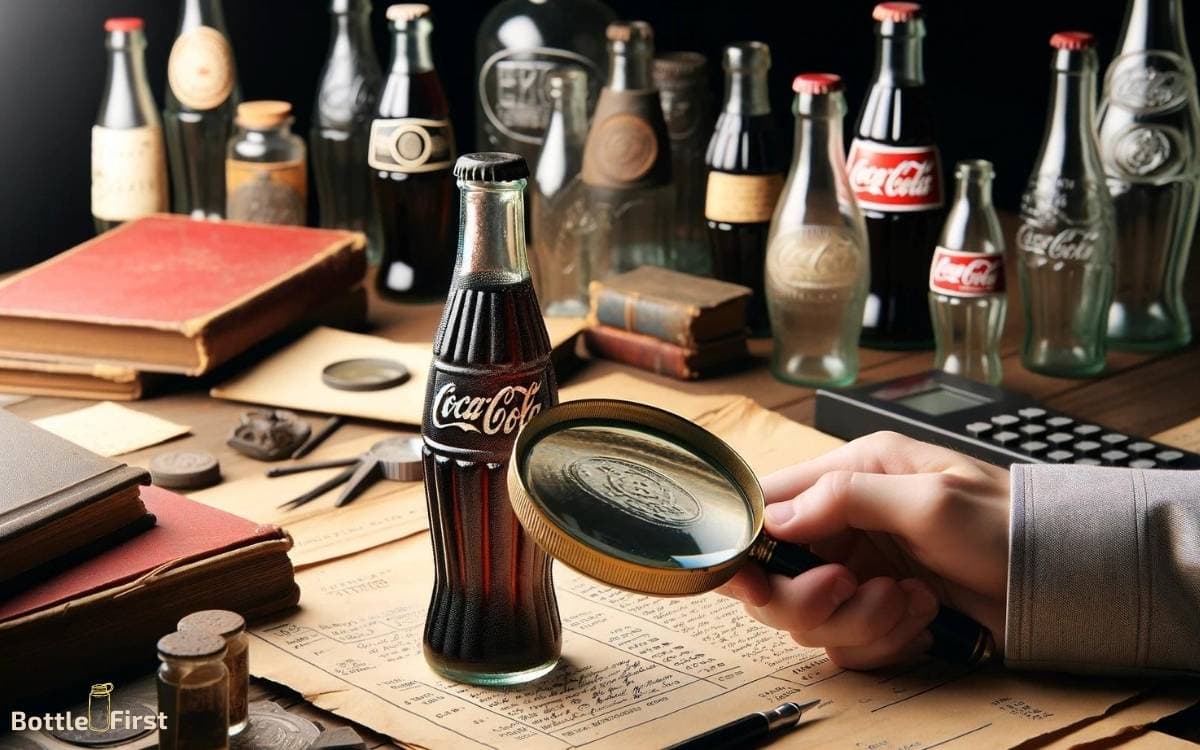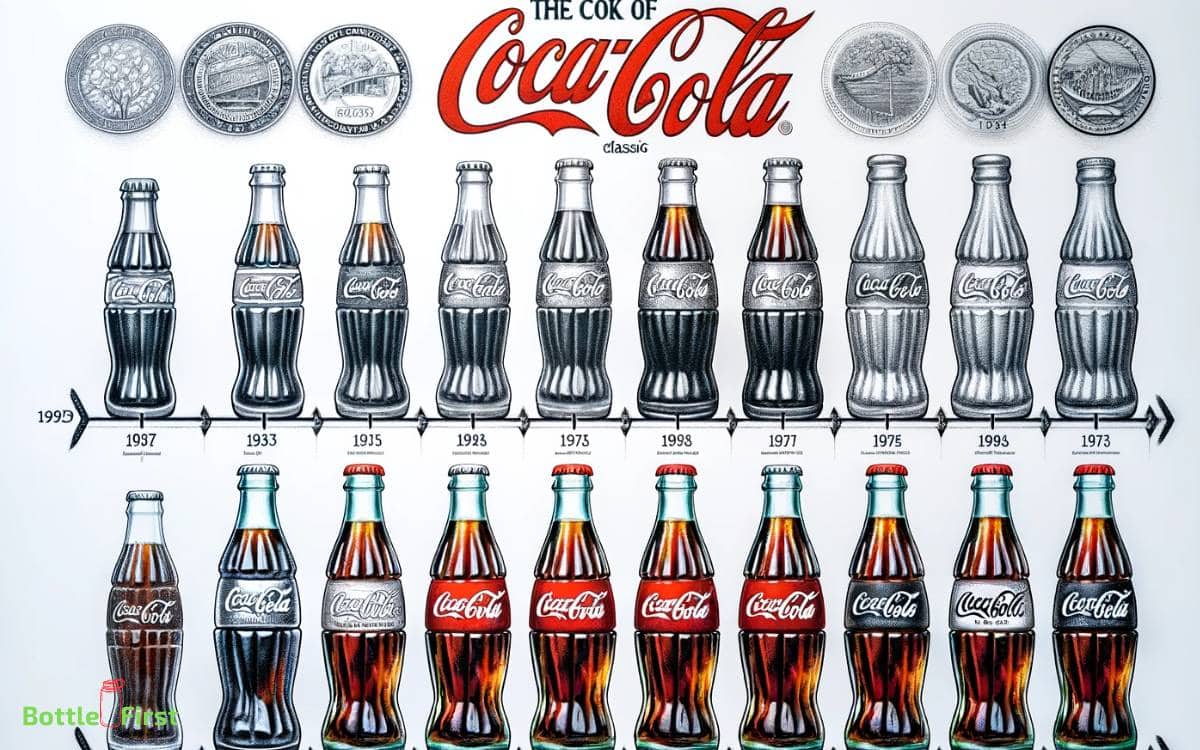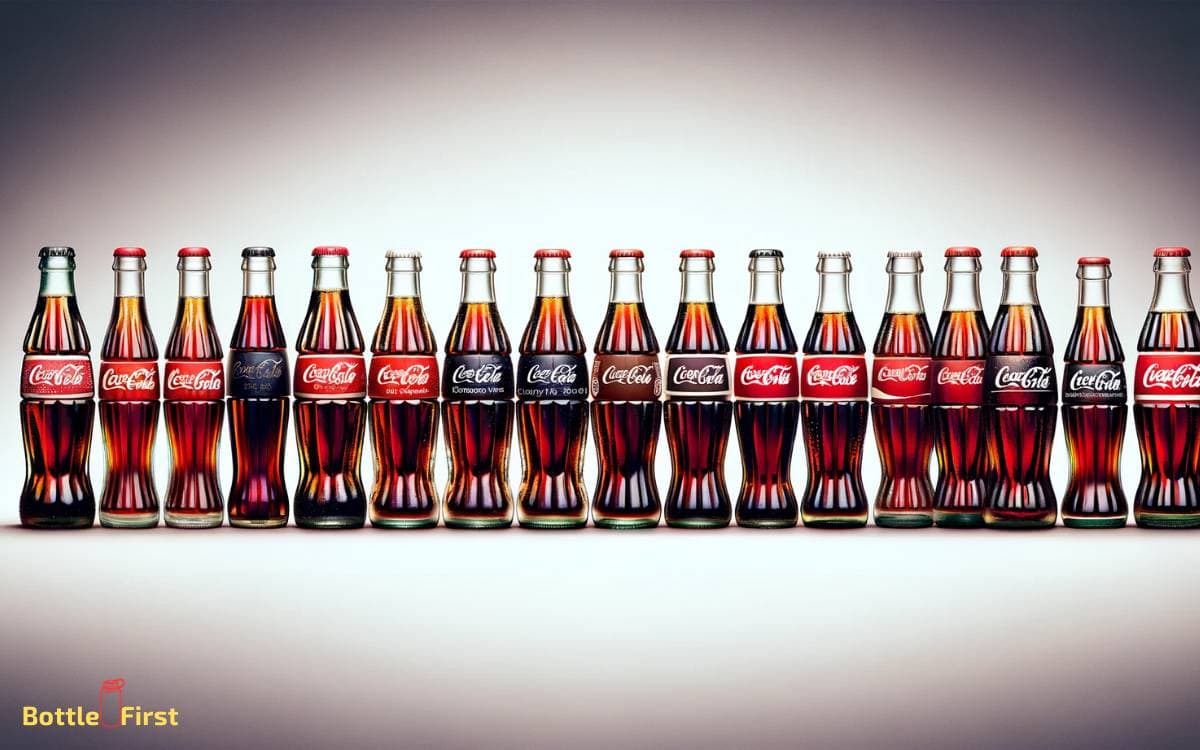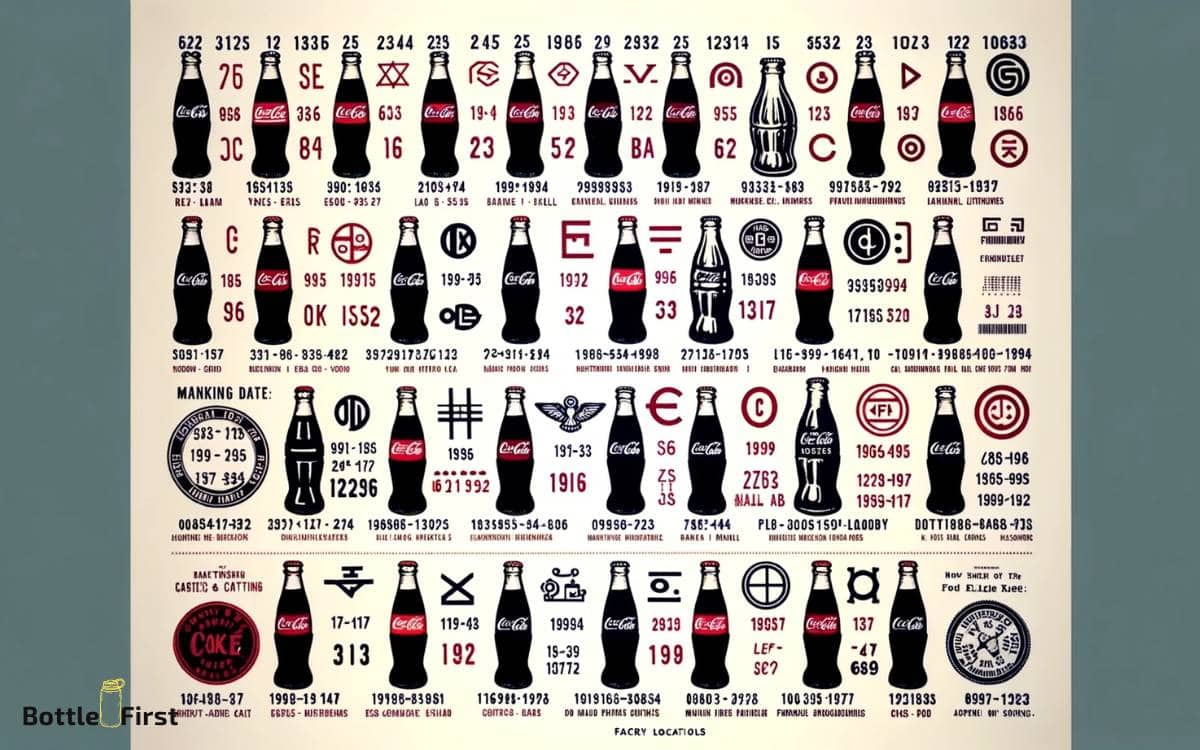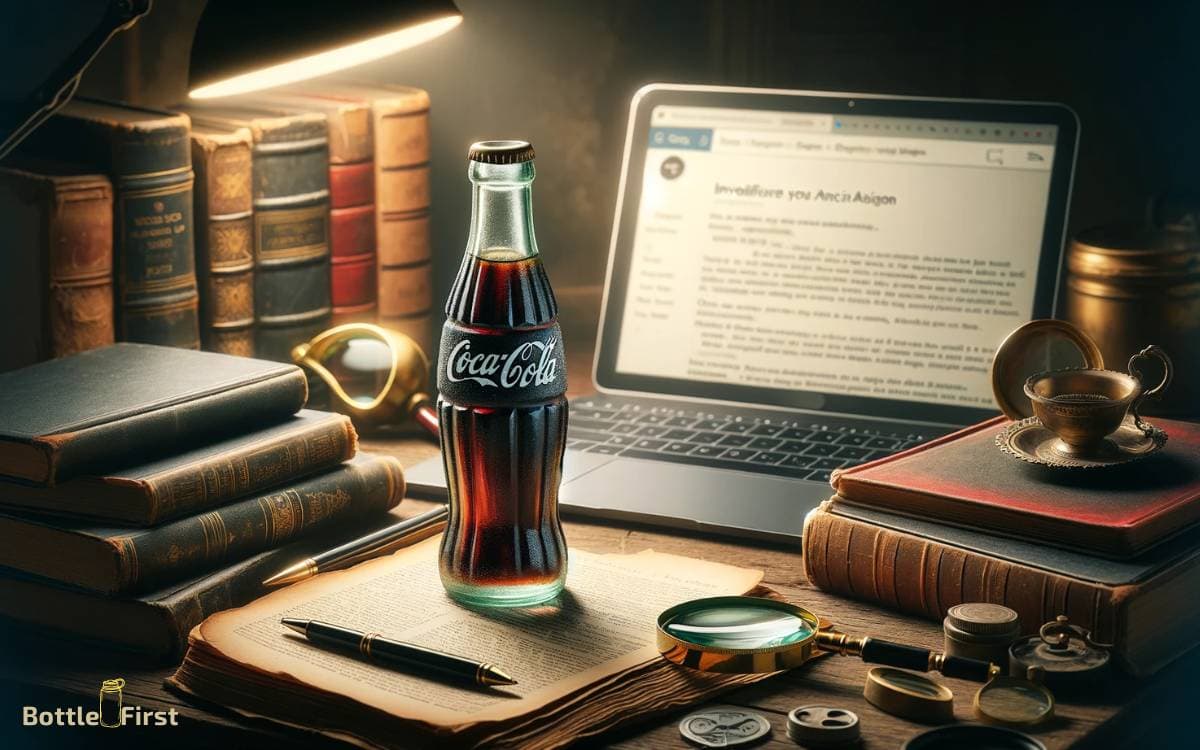How to Tell How Old a Glass Coke Bottle Is? 5 Easy Steps!
Determining the age of a glass Coke bottle can be accomplished by closely examining several key features.
These include the logo on the bottle, which has changed over time, the manufacturer’s marks often found on the bottom or side, the specific design and shape of the bottle which Coke has altered throughout its history, the presence of date codes, and understanding the historical context of the bottle’s design.
Here are some quick steps:
For example, the iconic ‘hobble-skirt’ design was patented in 1915, so a bottle with this design would be from 1915 or later.
Unearth the past of your glass Coke bottle by analyzing distinctive features that reveal its manufacturing era.
Key Takeaway
Step 1: Identifying Coca-Cola Logo Evolution
You frequently encounter changes in the Coca-Cola logo when identifying the evolution of glass Coke bottles.
The logo on the glass bottles has undergone numerous alterations since its inception, reflecting the innovative spirit of Coca-Cola.
By examining the logo closely, you can pinpoint the era in which the bottle was produced. From the classic script lettering to the modern dynamic ribbon, each logo iteration represents a shift in design and branding.
This continuous evolution not only showcases the company’s commitment to staying current and appealing to consumers but also provides collectors and enthusiasts with a fascinating way to trace the history of this iconic beverage.
Understanding the nuances of the Coca-Cola logo over time adds a layer of depth and insight to the world of glass Coke bottle collecting.
Step 2: Examining Glass Manufacturing Marks
Glass manufacturing marks provide valuable clues for determining the age of a Coke bottle. By examining these marks, you can gain insight into the bottle’s production date and origin.
Here’s how to interpret these marks:
- Embossed Codes: Look for embossed codes on the bottle, often located on the base. These alphanumeric codes represent the glass manufacturer, mold number, and possibly the date of production.
- Innovative Tip: Use online resources or collector guides to decode these embossed marks and uncover the bottle’s manufacturing details.
- Mold Seams: Check the mold seams on the bottle. Older bottles typically have distinct, uneven mold seams, while modern ones have more seamless and smooth seams.
- Innovative Tip: Use a magnifying glass or smartphone camera to closely examine the mold seams and detect any inconsistencies.
- Distinctive Features: Note any unique features, such as applied color labels or unusual shapes, that can help narrow down the bottle’s age and rarity.
- Innovative Tip: Utilize image recognition technology or collector forums to compare these distinctive features and gather more insights.
Understanding these manufacturing marks can unlock the mystery of your Coke bottle’s age and history.
Step 3: Analyzing Bottle Design Changes
Continuing from examining glass manufacturing marks, how do you identify and interpret the design changes in a glass Coke bottle to determine its age?
One key aspect to look for is the evolution of the Coca-Cola logo and branding. The font, size, and positioning of the logo have undergone noticeable alterations over the years, reflecting the prevailing design trends.
Additionally, changes in the bottle’s contour, embossing, and base markings can also provide valuable clues about its age.
Innovations in manufacturing technology have enabled Coke to introduce various bottle design modifications, such as the transition from Hutchinson-style bottles to straight-sided ones.
Step 4: Understanding Date Codes and Symbols
To understand the age of a glass Coke bottle, you should start by decoding the date stamping methods and identifying the manufacturer’s symbols.
These date codes and symbols can provide crucial information about when the bottle was produced and by which company.
Decoding Date Stamping Methods
To understand the age of a glass Coke bottle, you should look for date codes or symbols on the bottle. Decoding these date stamping methods can provide valuable insights into the bottle’s age.
Here’s how you can decode date stamping methods:
- Numeric Date Codes: Some bottles have date codes in the form of numbers, typically representing the year and possibly the month or day.
- Example: A code like ‘03172’ could represent the 31st day of the year 1972.
- Letter Date Codes: Look for letters that may indicate the production date, often using a combination of letters to represent months.
- Example: ‘A’ could represent January, ‘B’ for February, and so on.
- Symbolic Date Codes: Some bottles use symbols or logos to convey the production date, which may require referencing a specific decoding guide.
- Example: A small symbol next to the brand logo could indicate the production date.
Identifying Manufacturer’s Symbols
You can further understand the age of a glass Coke bottle by identifying manufacturer’s symbols, such as date codes and logos, which provide valuable information about its production date.
Many glass Coke bottles have manufacturer’s symbols stamped on the base. Look for numbers or letters that indicate the date of production. For instance, a number like ‘52’ could mean the bottle was made in 1952.
Additionally, certain logos or symbols changed over time, so identifying these can help pinpoint the era in which the bottle was made.
By deciphering these manufacturer’s symbols, you can gain insight into the bottle’s age and production period. Understanding these symbols can be an exciting way to uncover the history behind each bottle.
This knowledge will inform your next step in researching historical context and company records.
Step 5: Researching Historical Context and Company Records
To research the historical context and company records of a glass Coke bottle, start by checking company archives and databases for any relevant information.
Look for records of bottle designs, production dates, and any changes in the company’s branding or manufacturing processes.
Investigating the historical context surrounding the bottle’s production can provide valuable insights into its age and potential value.
Company Archives and Databases
When researching the age of a glass Coke bottle, start by accessing the company archives and databases for historical context and company records. This is a crucial step in determining the production era of the bottle.
Here’s how you can leverage company archives and databases to gain valuable insights:
Explore Digital Archives:
- Utilize digitized records and historical documents for detailed information on bottle designs and manufacturing processes.
- Look for any digital databases or online resources provided by the Coca-Cola company, which may offer specific details about bottle variations over time.
- Use advanced search features or filters to narrow down your focus to the specific period of interest.
Historical Context Investigation
Accessing company archives and databases allows you to delve into the historical context and company records essential for dating a glass Coke bottle accurately.
By researching the historical context, you can uncover valuable information about the evolution of Coca-Cola’s bottle designs and manufacturing processes.
This can help you narrow down the possible age range of a particular bottle based on its unique characteristics and markings.
Additionally, examining company records may provide insight into specific production runs or changes in bottle design, aiding in the precise dating of the bottle.
To illustrate this concept, consider the following table:
| Historical Context Investigation | Company Records |
|---|---|
| Evolution of bottle designs | Production run details |
| Manufacturing processes | Changes in bottle design |
Understanding the historical context and company records is crucial for accurately determining the age of a glass Coke bottle.
When you’ve gathered as much information as possible from the company archives and databases, it’s time to consult experts and online resources for additional insights and expertise.
Step 6: Consulting Experts and Online Resources
You can gain valuable insights into the age of a glass Coke bottle by consulting experts and utilizing online resources.
Here are some innovative ways to do so:
- Expert Appraisal: Seek out the expertise of antique collectors, glass bottle historians, or Coke bottle enthusiasts. Their specialized knowledge can provide detailed information about the manufacturing techniques, design changes, and labeling variations that can help pinpoint the bottle’s age.
- Online Forums and Communities: Engage with online communities and forums dedicated to Coke bottle collecting. These platforms are filled with knowledgeable individuals who are often eager to share their expertise and can help identify specific features that indicate the bottle’s age.
- Digital Archives and Databases: Utilize online resources such as historical archives, bottle dating guides, and Coca-Cola company records to cross-reference details found on the bottle with known production periods. Digital tools can provide valuable data and historical context to accurately determine the bottle’s age.
Conclusion
Now that you know how to tell how old a glass Coke bottle is, you can impress your friends with your newfound knowledge.
Some may argue that it’s not worth the effort, but uncovering the history behind a vintage Coke bottle can be a fascinating journey that adds depth to your collection.
So next time you come across an old bottle, you’ll be equipped to decipher its age and appreciate its historical significance.
